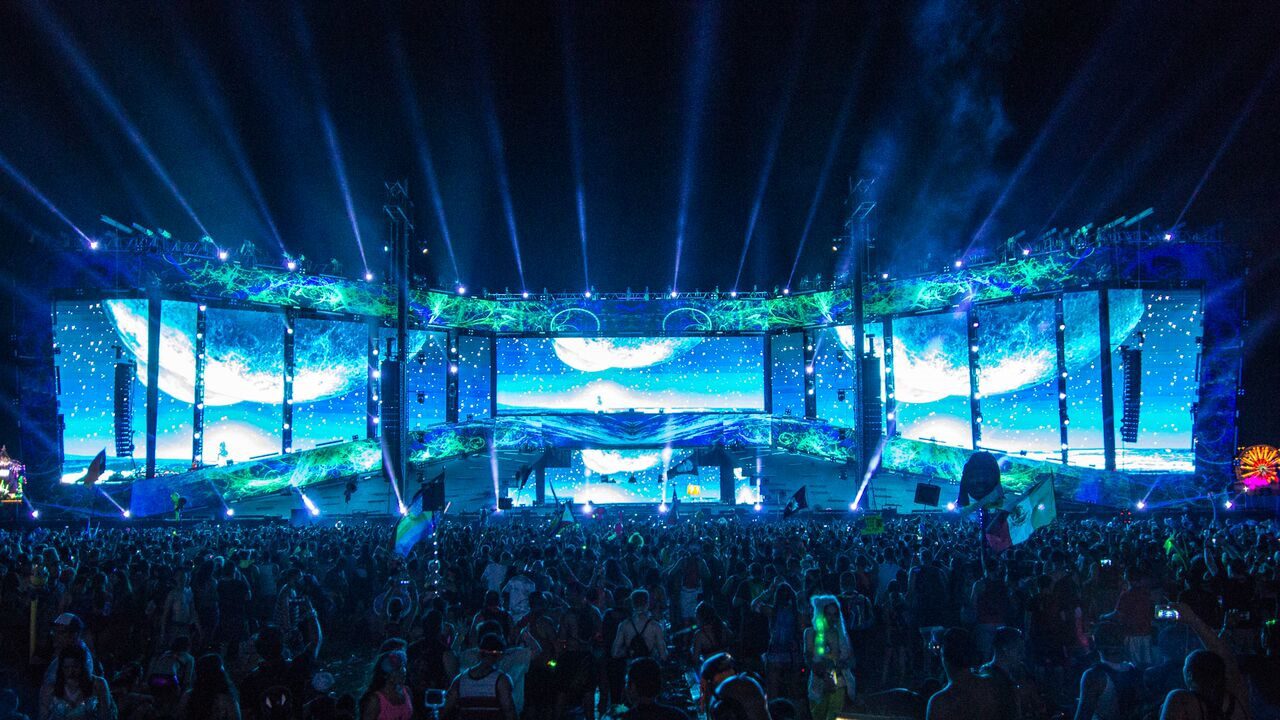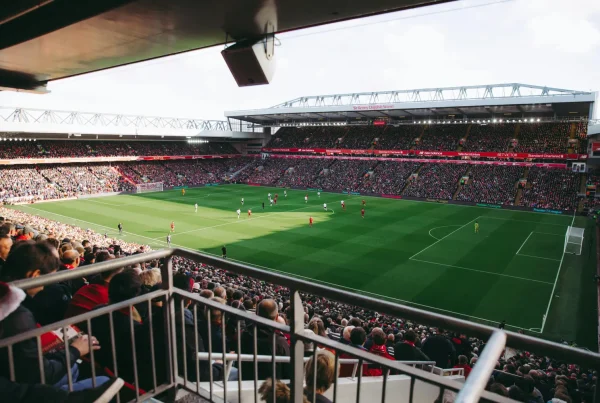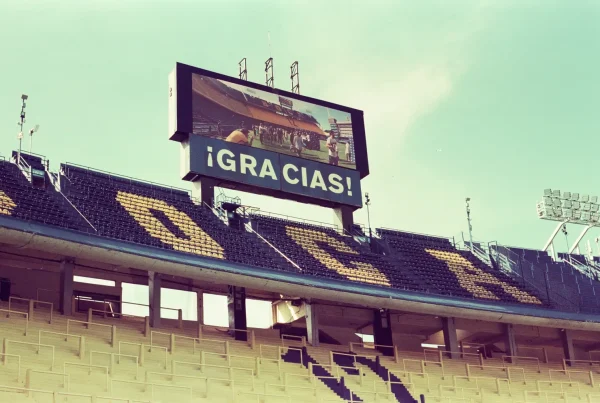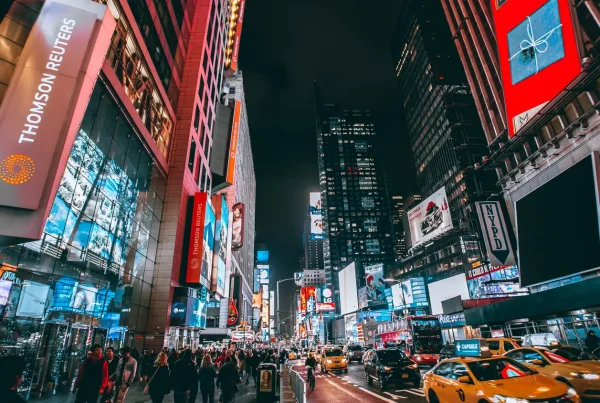About Jumbotrons
A jumbotron is a large screen or display that is typically used to show video, images, or other types of multimedia content.
Jumbotrons are often found in sports stadiums, concert venues, and other large public spaces where people gather to watch live events.
What Does Jumbotron Mean – Where did the word come From?
The term “jumbotron” is actually a registered trademark of the Sony Corporation, which introduced the first jumbotron in 1985.
Since then, the term has come to be used more broadly to refer to any large-screen display used for public entertainment or information.
What Is Another Name For A Jumbotron?
Other names and phrases for a jumbotron include jumbovision, large screen display, and video wall. These terms are often used interchangeably with jumbotron.
How A Jumbotron Works
While in the early days, jumbotrons relied on cathode ray tubes (CRTs) to produce an image, they now use LEDs.
As a result, the screens in use today offer significantly more resolution than their outdated counterparts—as much as ten times more.
Original Jumbotron
The original Jumbotron screens were composed of multiple modules, each having 16 or fewer CRTs.
How Are Jumbotrons Constructed?
The construction of jumbotrons varies depending on the manufacturer and the specific needs of the installation, but in general, there are several key components that go into making a jumbotron.
LED panels
The heart of a jumbotron is its display. Most jumbotrons use LED panels, and each one contains thousands of tiny pixels. These components are carefully built through proprietary computer and integrated design systems.
Mounting Structure
How you secure a jumbotron is of utmost importance, as you never want one to fall from its place.
Jumbotrons need to be securely mounted to a supporting structure, such as a steel frame or truss system, to ensure that they can withstand wind and other environmental factors.
Control System
Jumbotrons are connected to a dedicated computer system that sends video content to the display.
The content can come from a variety of sources, such as cameras that capture live video of the event or pre-recorded video that has been edited and prepared in advance.
Sound System
No jumbotron would be complete without a sound system, which is why many jumbotrons come equipped with sound systems to enhance the audience’s experience.
Making a jumbotron is complex and requires detailed assembly, testing, and installation processes.
How Much Does It Cost To Buy A Jumbotron?
In general, a small jumbotron, such as one used for a high school football field, may cost around $30,000 to $50,000.
A larger jumbotron for a professional sports stadium, meanwhile, will likely cost several million dollars.
The final cost of a jumbotron depends on the size and resolution of the display, the type of LED panels used, the complexity of the control system, and the location and installation requirements.
Note: It’s not unheard of for a high school jumbotron to cost $200,000 or more. In fact, the Carthage Jumbotron at Carthage High School in Texas cost around $750,000 to construct and install!
How Much Did The SoFi Jumbotron Cost?
The world’s largest video scoreboard, the SoFI jumbotron, meanwhile, has an undisclosed cost, but we would estimate a price of at least $40MM+.
For comparison, the big screen TV at AT&T Stadium in Arlington, TX cost $40 million to build.
How Much Does It Cost to Rent A Jumbotron?
In general, jumbotron rentals start at around $1,000 to $2,000 per day for a small, basic unit and can go up to $10,000 or more per day for a large, high-end unit with advanced features.
The rental price includes additional services such as setup and installation, content creation, and technical support.
Jumbotron Rental Price Factors
Factors that determine the final price for a jumbotron rental include the event location, transportation costs, and any additional services or equipment that may be required.
The length of the rental contract may also impact the price because some companies offer discounts for long-term rentals.
What Are Jumbotrons Used For?
Jumbotrons have a wide range of uses.
Specific uses include:
- Displaying live video feeds, highlight replays, and other information for the audience at live sports events, concerts, and festivals.
- Advertising content via brand messages, product promotions, and sponsored content.
- Sharing a wide range of information such as weather updates, news headlines, social media feeds, and other data.
- Providing information and entertainment to the public in spaces like city squares, airports, and shopping malls.
- Showcasing product features at corporate events.
- Offering a clear view for the audience at a large-scale gaming event, for example, an eSports tournament.
Who Has The Biggest Jumbotron in The World?
High-Definition LED Screen
According to Guinness World Records, the largest high-definition LED screen display is located at The Place in Beijing, China.
It measures 250 m x 30m (820 ft x 98 ft).
Stadium Screen
The biggest stadium screen, meanwhile, is The Infinity Screen at SoFi Stadium, which spans an astonishing 70,000 square feet.
The screen is 6 m to 12 m (20 ft to 40 ft) tall and weighs in excess of 2 million pounds.
About YAHAM
Yaham Optoelectronics Co., Ltd (Yaham) creates LED displays, LED traffic signage, and LED lighting. We provide custom-designed LED displays to meet our clients’ needs and have brought our services to more than 112 countries.
Our manufacturing facilities at Yongwei Park measure over 30,000sq.m, with capabilities that include the following:
Electronic assembly, metal fabrication, circuit board manufacture, painting, welding, final assembly, testing, and shipping.
For more information and to speak with us, visit our Contact page.




